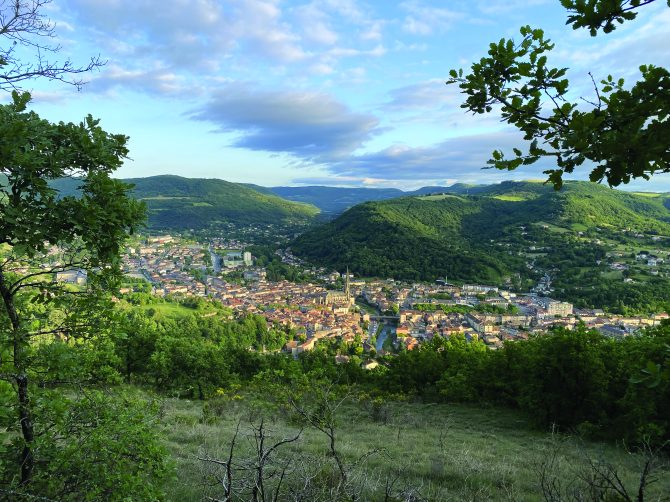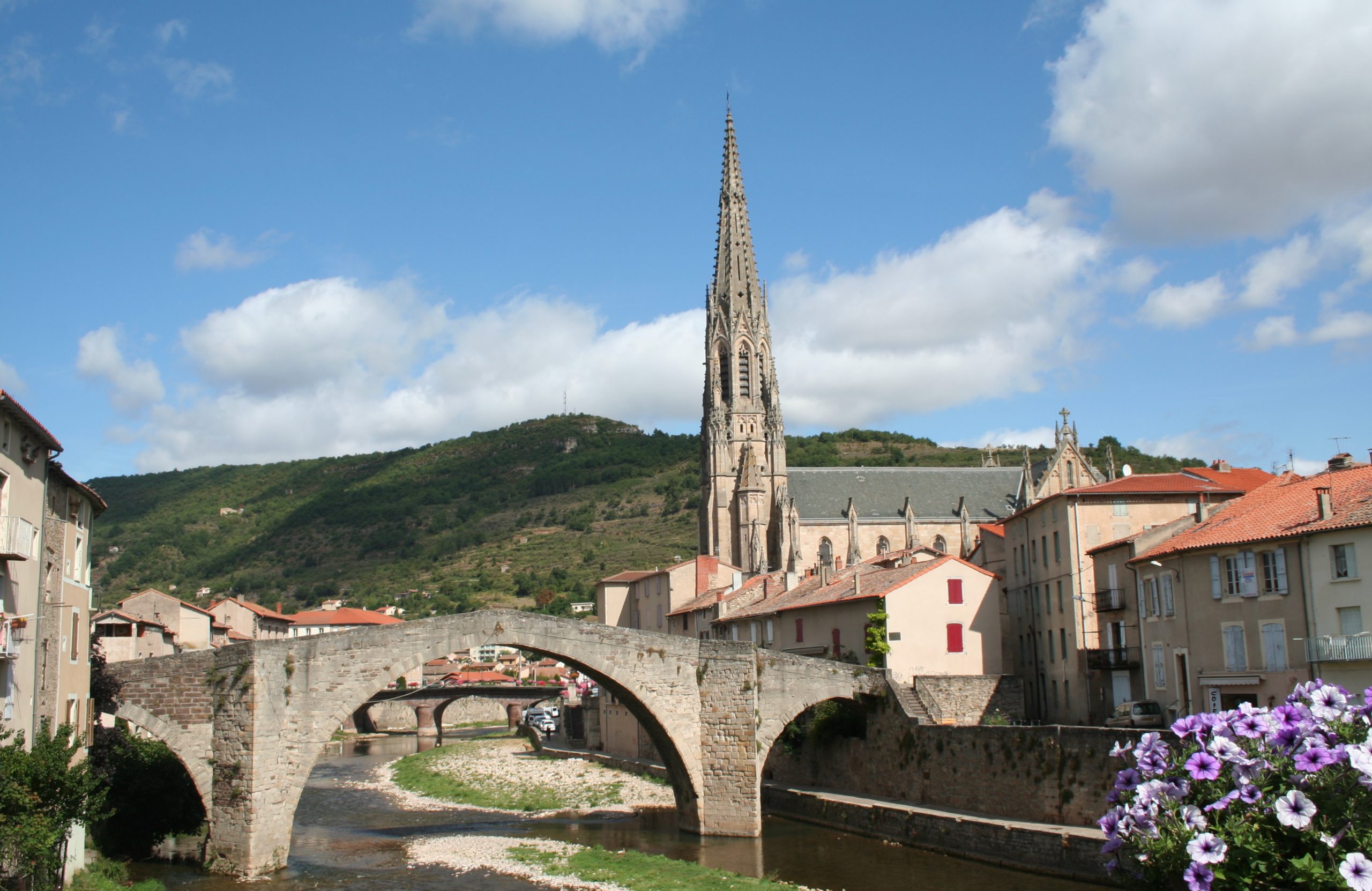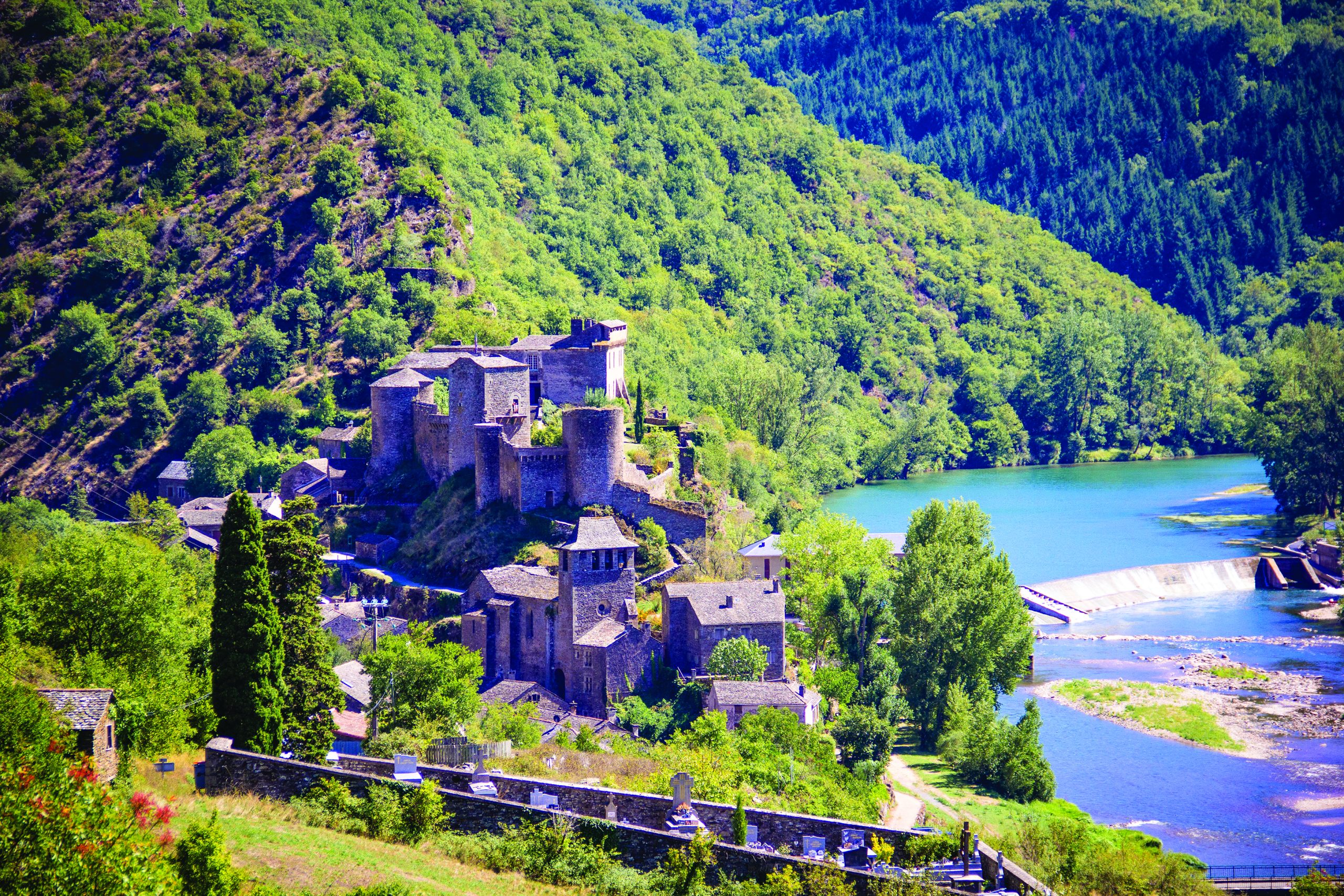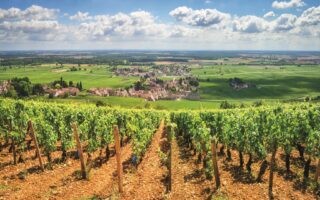Pays de Roquefort & St-Affrique: French Property Location Guide

Carolyn Reynier explores the Pays de Roquefort and St-Affrique and in Aveyron…
Want to get away from it all but want to get there easily? Dreaming of a tranquil bolthole or hankering after a lifestyle change, running gites in character-oozing old stone buildings? With a population density of 32 souls per square kilometre, the Occitanie department of Aveyron should fit the bill in general, and the Pays de Roquefort and St-Affrique, in particular.
This territory, a preparation centre for the 2024 Olympic Games, lies in southern Aveyron within the 330,000- hectare Parc Naturel Régional. des Grands Causses, an area of grandiose Jurassic limestone plateaux. Here, for 5,000 years man has tilled the land, raised sheep and made cheese.
The village of Roquefort-sur-Soulzon (altitude 630m) makes its famous blue cheese from the raw milk of Lacaune ewes and Penicillium roqueforti. The cheeses mature a minimum of three months in cellars which you can visit. Then you could swim and picnic by the Sorgues at St-Affrique Plage, hike along 400km of signposted paths through wooded valleys, terraced landscapes and past ancient megaliths, or run, walk or cycle along the St-Affricain Voie Verte.
If perchance you do not find your perfect property here, perhaps sub-prefecture Millau, a medieval Ville d’Art et d’Histoire, will fit the bill. The Millau Viaduct, an elegant 2,460m cable-stayed bridge spanning the Tarn and designed by our very own Lord Norman Foster, has opened up the Massif Central to visitors since December 2004.

I spoke to Hubert Peyrottes of HPI Immobilier in St-Affrique (population c.8,000). Although human occupation dates back to prehistoric times, the town, named after Affricanus, a 6th- century bishop of Comminges, first appears in a charter in 942.
In the centre, there are small stone terraced houses with larger ones divided into apartments. On the outskirts, more modern buildings date from the 1970s. In the mid-2000s there was much construction of residential areas, zones pavillonaires (a pavillon is a detached house with garden).
The stone used for old properties varies. Hubert explains that south Aveyron is a diverse territory in both architecture and construction. Building stone can be sandstone, grès, granite and sometimes river pebbles, galets.
Where there are ‘causses‘ plateaux, by definition there’s limestone, while in the lower plain area, there’s the characteristic red soil of the Rougier de Camarès. Iron oxide in friable clay, sandstone and schist has created a craggy Colorado-style landscape of ravines and a brick red soil. St-Affrique is the demarcation between the causses and the Rougier.
Although old town centre houses in St-Affrique are mainly sandstone of causse limestone, most have been rendered. Some of the oldest constructions are in galets, given the proximity of the river. Expect to pay €80,000- €120,000 for a small terraced house in the old town. These rarely come with outside space and parking can be difficult.
In general, Hubert quotes €1,200 €1,400/m² for renovated houses and apartments in the old town, adding that St-Affrique property prices are generally a little higher than the rest of the sector. This is still very much a rural area. There are large properties on the causses, often owned by farmers. It’s easier to find smaller properties with a bit of land old farmsteads, corps de ferme – south and west of St-Affrique, says Hubert. You could pay around €200,000 for a property requiring renovation, depending on size. If you prefer to just poser vos valises (take up residence, settle in), currently lots of properties bought and renovated around 15 years ago, are now coming back on the market.
You’ll be enchanted by surrounding villages. Just northwest of St-Affrique, medieval Brousse-le-Château, on the Tarn, is a Plus Beaux Village de France. In large secluded grounds, with an exceptional viewpoint over the Tarn valley, an old building. now enlarged and renovated, has four bedrooms, one in a gite, with potential to create a second two-bedroom one (€261,000, Arc-Immo-81).
Hubert mentions Bournac on the Dourdou, between Brousse- le-Château and St-Affrique, which is getting a new lease of life-a steep village with winding lanes, the only one in the St-Affrique commune built in characteristic Rougler stone.
The medieval cité perchée of Combret-sur-Rance is a Petite Cité de Caractère southwest of St-Affrique. There’s a great renovation project here- an old two/three-bedroom house built from local stone, attic for conversion, and non-adjoining riverside kitchen garden (€76,000, Immostaging).
From St-Affrique, drive south along the pretty and popular Sorgues valley and discover Versols-et-Lapeyre, St-Félix- de-Sorgues (three-bedroom village house with fireplace and cellar, €66,000, Nestoria) and Fondamente.

We head east now to Roquefort- sur-Soulzon and the Larzac causse. The village is currently undergoing a restoration and renovation programme.
Roquefort production was first protected by the Toulouse parliament in 1666 and was the first cheese to obtain an Appellation of Origin, in 1925. If you want to reside and rent out in Roquefort, a renovated three-bedroom stone barn is for sale, with internal exposed stonework, a small garden, garage, three cellars, plus an apartment for conversion (C195,000, Century 21).
On the Larzac plateau, you’ll find villages of small, old maisons caussenardes. These were generally built with a water cistern, sheep pen, accommodation and hayloft under one roof.
Old properties here, full of character, really do lend themselves to accommodation- based businesses. For example, east of Roquefort at Ste-Eulalie- de-Cernon, you can buy a four- bedroom medieval property built by the Knights Templar, with large vaulted rooms, internal veranda heated in winter by an ancient fireplace with modern insert, working communal bread oven and a two-metre outer wall (they knew how to build in those days). Sold furnished, there’s the possibility of creating independent dwellings for rental income (€400,000, Roques Immobilier).
Nearby, the Bergers du Larzac cooperative at La Cavalerie makes Lou Larzac Pérail, a rather tasty ewe’s milk cheese made from lait thermisé. (milk heated to 57-68°C, a halfway house between raw milk and pasteurised cheeses).
Further south on the Hérault/Gard border, have a look at Plus Beaux Village de France La Couvertotrade, created over seven centuries (they also took their time in those days) by the Templars and Knights Hospitaller.
Investing in property here
There’s good long-term let potential for the investor with agricultural and associated activity linked to cheese- making. With a production of 16,000 tonnes in 2020, Roquefort easily heads the list of the three AOP, protected origin, ewe’s milk cheeses. (The other two? 5,000 tonnes of Pyrenean Ossau-Iraty and 360 tonnes of Corsican brocciu).
Agricultural schools provide a market for student accommodation. The La Cazotte lycée is the Occitanie’s “fer de lance”, spearhead, for agricultural education; at St-Sernin-sur-Rance, Valrance, the Ecole des Métiers de la Nature, teaches trades connected with nature and the environment.
Throughout the area small villages are experiencing a renaissance with the uptick In the property market, continues Hubert. It may be rural, but south Aveyron has a good road network. The A75 La Méridienne motorway is nearby, and the Conseil Général maintains smaller roads. You’ve a choice of towns and cities-Millau, Rodez, Albi, Montpellier and Toulouse.
A big plus point is that “we still have the four seasons,” says Hubert. Winters are reasonably mild. It is small mountain territory (the highest point in south Aveyron is the Merdelou at 1,200m) with quite large altitude variations. “We can have snow on one part of St-Affrique and not on another,” he explains.
Aveyronnais Hubert says the great appeal is the quality of life and the preserved natural “environnement bucolique“. We are in the Natural Regional Park and the fact that access was difficult for so long has enabled some preservation of these spaces even if the agriculture here is very intense. There’s lamb, market gardens, cereals, an increase in organic growers and direct sales from small producers. We have quality produce, adds Hubert. “It’s rural, we eat well, and on top of that, there’s work for those who want to
You don’t have any wine, I muse. “No, we don’t have wine, but we have good cellars to age it in. Voilà,” he laughs. “We exchange Roquefort for wine.” You barter, I reply. “On fait le troc, oui.”

Surrounded by the Causse Noir, Causse du Larzac and Causse Rouge, Millau sits in a bend in the Tarn, at the confluence of the Tarn and Dourbie valleys.
The Graufesenque Gallo- Roman archaeological site here was a major production centre of red terra sigillata pottery distributed throughout the Roman Empire in the 1st century AD. Perhaps you’ll dig up a piece left over from a Roman picnic to display on the shelves of a large renovated two-bedroom garden and street level duplex with gite potential -terrace, garden, spa, close to the quays (€264,900, Habitat).
In nearby Compeyre, the medieval part of the village lies on the southern slope of the Sauveterre Causse, downstream of the Tarn gorges. The geology here is ideal for wine cellars. A large three-bedroom stone village house with sunny roof terrace requires renovation and has a ruined outbuilding offering extra potential (€115,500, Roques Immobilier).
The unique mix of legal, financial and tax advice along with in-depth location guides, inspiring real life stories, the best properties on the market, entertaining regular pages and the latest property news and market reports makes French Property News magazine a must-buy publication for anyone serious about buying and owning a property in France.
Share to: Facebook Twitter LinkedIn Email
More in Location guide
Leave a reply
Your email address will not be published. Required fields are marked *




